| Vintage Pulp | Feb 3 2024 |

The movie is a Horn of plenty—of sticky historical issues.
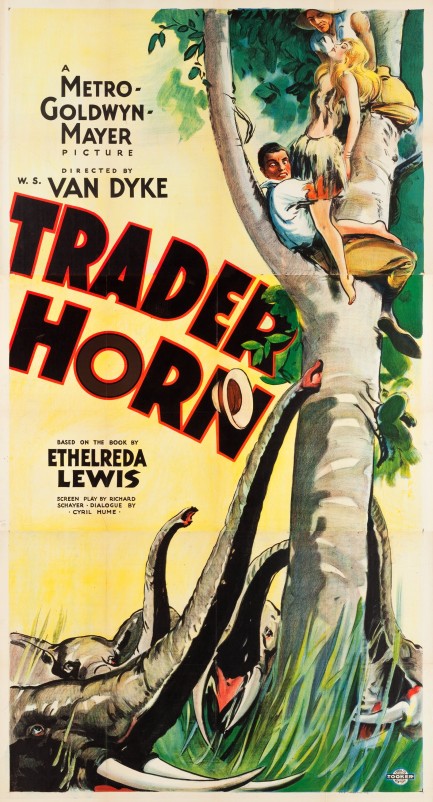
Trader Horn is an Academy Award nominated movie adapted from the real life African adventures of the explorer Alfred Aloysius “Trader” Horn, and as a major production has many high quality posters. The one above is our favorite, but all the promos are impressive, as you'll see when we share some a little later. Trader Horn is an archetypal white goddess movie—which is to say, a group of intrepid adventurers encounter a white woman reigning over an African tribe. Obviously, Hollywood took a bit of creative license with Horn's biographical writings. At least, we assume so. Harry Carey plays Horn, an old hand on the Dark Continent, whose aplomb in the face of danger is nothing short of Richard B. Riddickesque: “The good Lord only gives us one death to die and a fellow musn't bungle it.”
On the other side of the emotional spectrum is the white goddess, played with pre-Hays Code abandon by a half-clad Edwina Booth. The central thrust of the plot is Horn's efforts to return Booth to the modern world. That's standard for the white goddess sub-genre. What isn't standard is Trader Horn's location shooting in the places known back then as the Terrritory of Tanganyika, the Protectorate of Uganda, Kenya Colony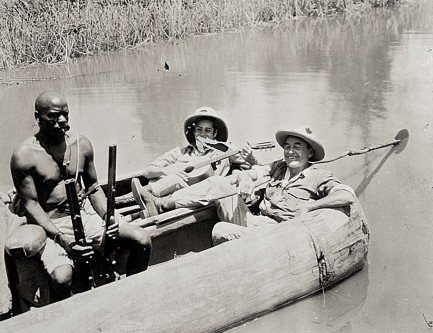
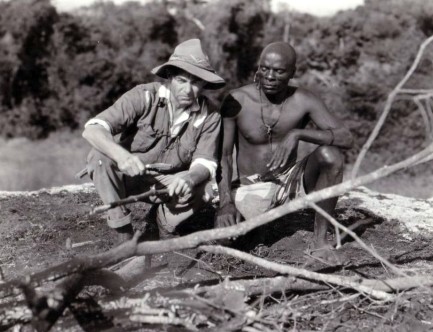 Anglo-Egyptian Sudan, and the Belgian Congo. The expenduture must have been enormous, but the money shows—vividly. You won't be surprised to learn that people died making the film—one by being consumed by a crocodile, and the other by being trampled by a rhino. There were also numerous illnesses and accidents. And... it was all worth it! Just kidding. Thoughts and prayers.
Anglo-Egyptian Sudan, and the Belgian Congo. The expenduture must have been enormous, but the money shows—vividly. You won't be surprised to learn that people died making the film—one by being consumed by a crocodile, and the other by being trampled by a rhino. There were also numerous illnesses and accidents. And... it was all worth it! Just kidding. Thoughts and prayers.

 Anglo-Egyptian Sudan, and the Belgian Congo. The expenduture must have been enormous, but the money shows—vividly. You won't be surprised to learn that people died making the film—one by being consumed by a crocodile, and the other by being trampled by a rhino. There were also numerous illnesses and accidents. And... it was all worth it! Just kidding. Thoughts and prayers.
Anglo-Egyptian Sudan, and the Belgian Congo. The expenduture must have been enormous, but the money shows—vividly. You won't be surprised to learn that people died making the film—one by being consumed by a crocodile, and the other by being trampled by a rhino. There were also numerous illnesses and accidents. And... it was all worth it! Just kidding. Thoughts and prayers.We don't have to get into specifics on the movie's plot. There isn't much of one. It's more of a narrated travelogue than a linear story. Even so, it's a massive production well worth seeing. Obviously, old movies usually have their issues, none more so than old movies set in Africa. But if you go in with the right attitude they can be fun. For example, anytime a white character says something about how savage Africans are, just add to the end of the line of dialogue something like: “Says the guy from the race that invented flame throwers and the electric chair.” Also, take a drink (optional). The subsequent occasion an awful generalization is made about Africans, come up with two more horribly savage things whites invented. You'll never run out. Best pair from our screening: “Says the guy from the race that invented the Spanish Donkey and pension clawbacks.”
Look, here's the thing—it can be a good idea to keep it light when it comes to ninety-year-old movies that touch on race, sort of the way it can be a good idea to laugh it off when your grandfather tells you that during his miliary service he once went to Tokyo on shore leave and found the Japanese to be, “an inscrutable little people.” You can't change him, so you save your valuable anger for when you'll really need it, like when you go to Florida, where racism officially doesn't exist. In Trader Horn's defense, it may have been—like your grandpa—fairly liberal for the period. Kenyan castmember and Masai chieftain Mutia Omoolu gets at least a dozen lines of dialogue. We bet he didn't get paid union scale, though. Actually, the SAG didn't exist until 1933, but you get the point. Omoolu and fellow Kenyan performer Riano Tindama did, however, earn a trip to L.A. for reshoots, an event that occasioned some sensationalistic press coverage of a predictable nature.
We've wandered far afield. Let's crank this careening post back onto the main roadway and ask: Is Trader Horn a good movie? Owing to its age, we obviously wouldn't go that far. But it's a tremendous spectacle, and serious film buffs should see it. The idea that actors were out there on the veldt shooting this stuff instead of in front of a green screen emoting opposite a volleyball on a stick is amazing. But that type of unfiltered filmmaking is possibly gone for good. For one thing it costs a fortune. And generally, the arc of cultural development tends toward more safety, whether physically, mentally, professionally, or whatever. Beyond a doubt, certain things are lost along the way. Visceral cinematic realism comes to mind. But on the other hand, it's good for people not to be eaten by reptiles or contract schistosomiasis. Watch the movie and see what you think. It premiered in the U.S. today in 1931.
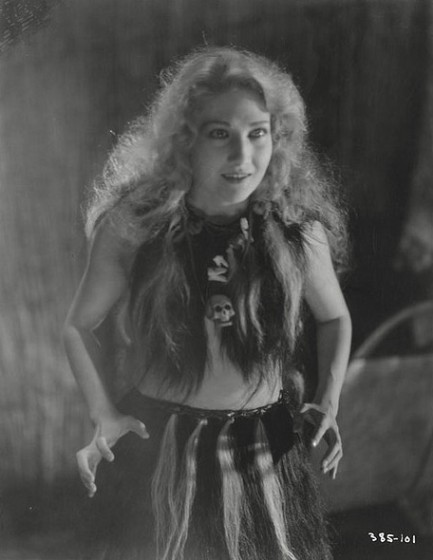
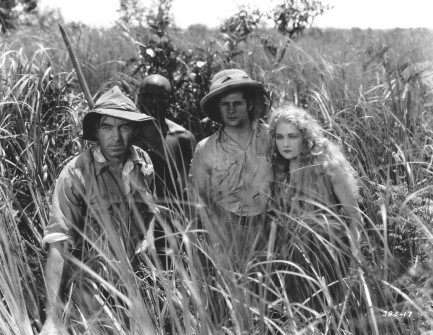
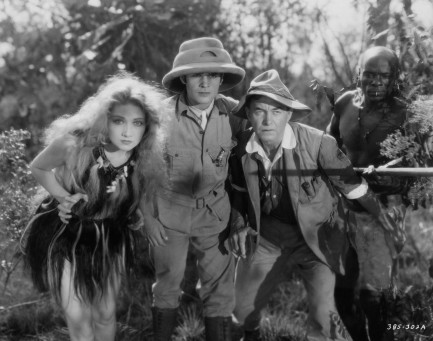
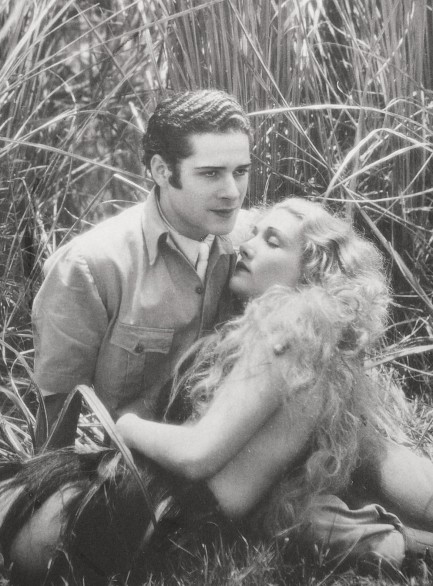
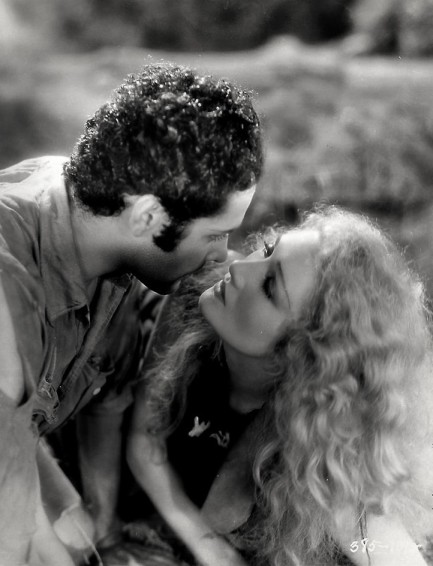
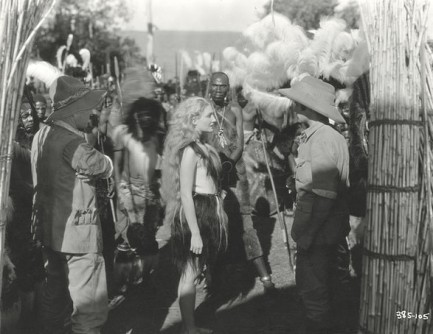
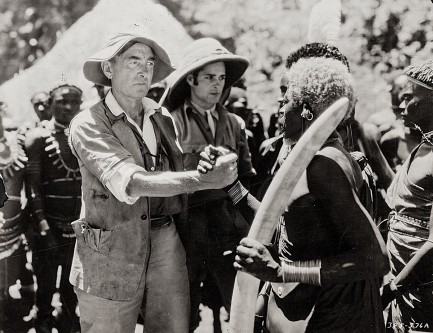
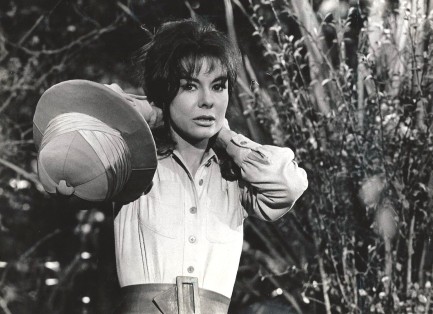
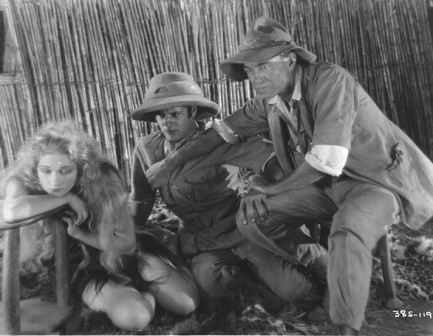
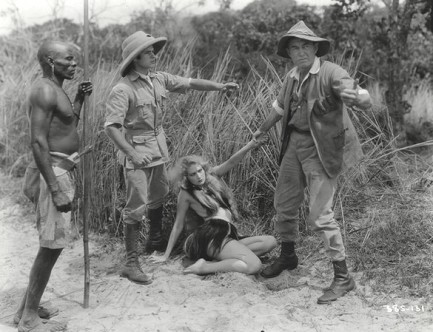
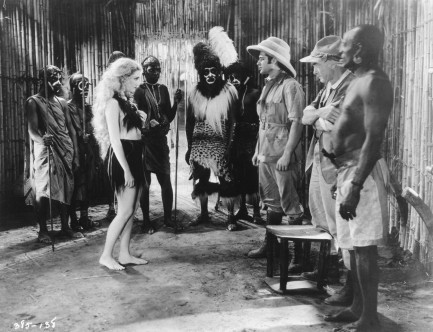

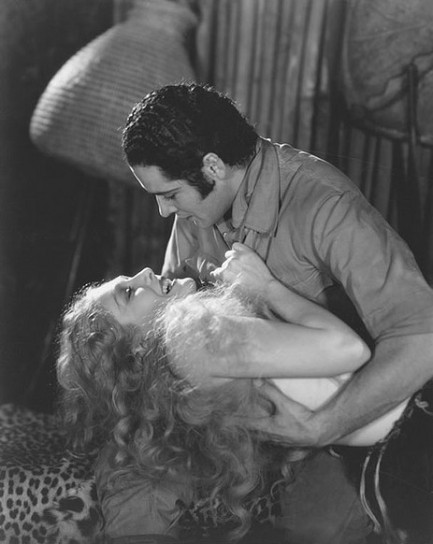
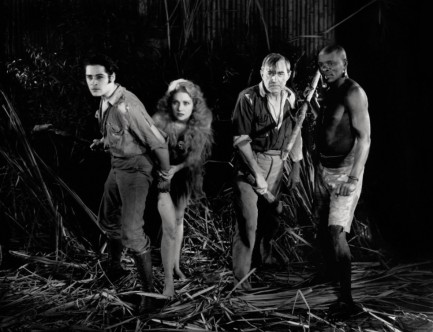

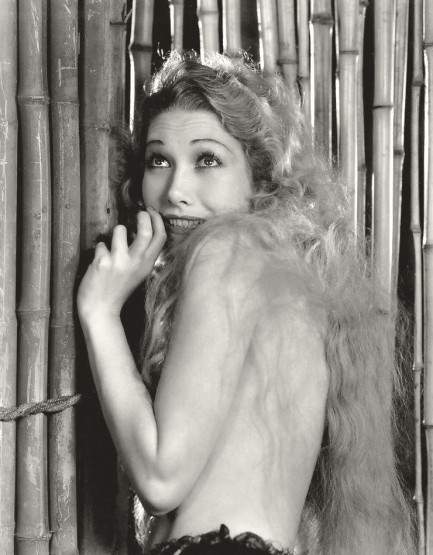

| Vintage Pulp | Dec 11 2023 |

Wild life abounds on sexploitation safari.

This free-spirited poster was made for the sexploitation flick Africa Excitaction, which was originally French/Italian made and realsed in the U.S. as Jungle Erotic. The main brain behind the production was Polish writer-director Zygmunt Sulistrowski, who also stars under the name Don Power, because, if you're gonna write and direct a horny epic, it might as well be you doing to grinding and gyrating. Even simulated sex can be fun—so we hear. Zygmunt didn't star as himself, but as Darr Poran. In addition, the listed actresses, Karen Roche and Mary Alexander, were credited as Carrie Rochelle and Alice Marie. It almost seems as if nobody wanted their names on this movie.
Plotwise, there's nothing complex here. Zygmunt takes two models and his amphibious car to Africa for an extended photo session and some employer-on-employee al fresco lovin'. That may sound fun, but the movie is basically a total loss. It's not coherent, and nobody can act. But—and there's always a but—it's a sexploitation flick, which means all it really needs is to deliver scenery, skin, and sin. The first comes from shooting in Tanzania and Uganda, the second is provided by co-stars Rochelle and Marie, and the third—well, there's plenty of softcore writhing. So in the end, you win. Africa Excitaction has no precise premiere date, but it debuted in 1970.

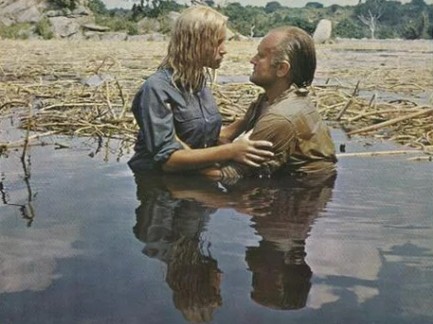
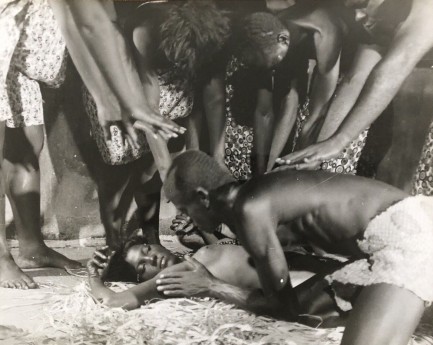

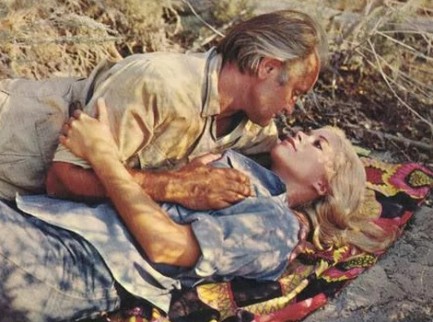
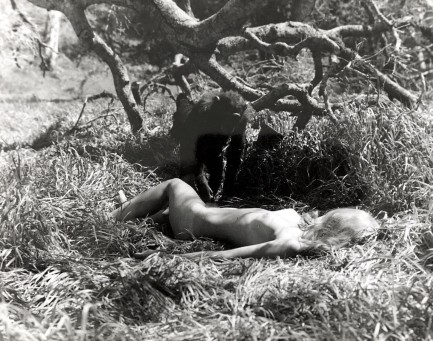
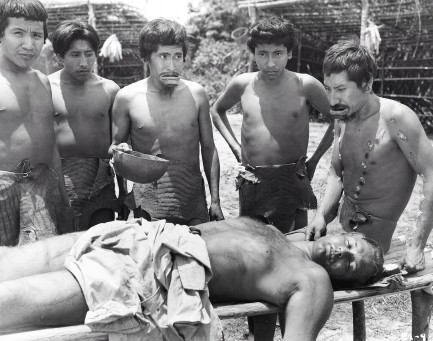
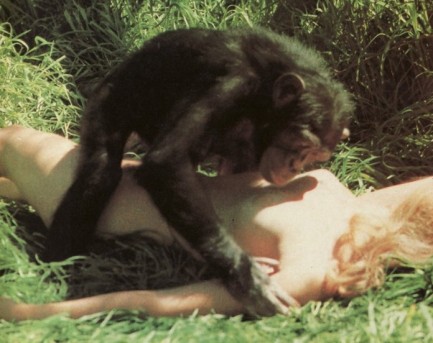
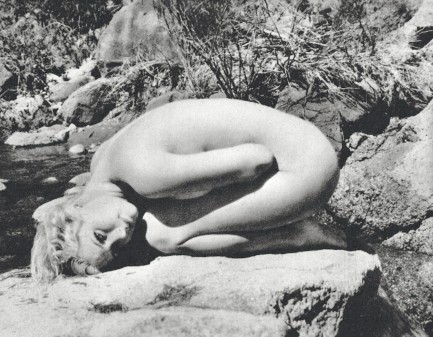
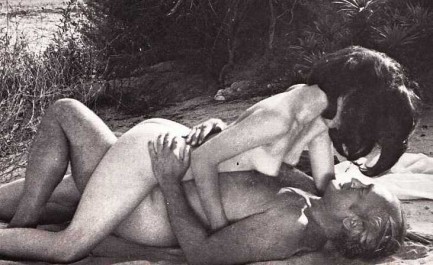
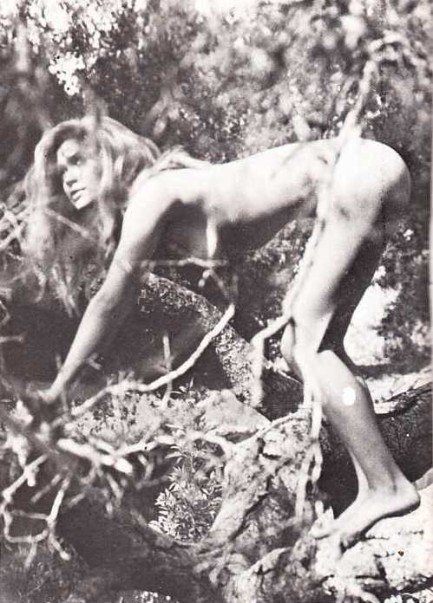
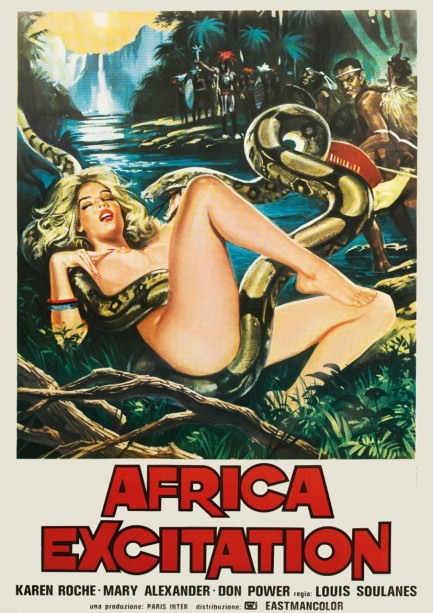












| Vintage Pulp | Sep 23 2022 |

Mogambo features the cruelest beast in all of Africa—and its name is Clark Gable.
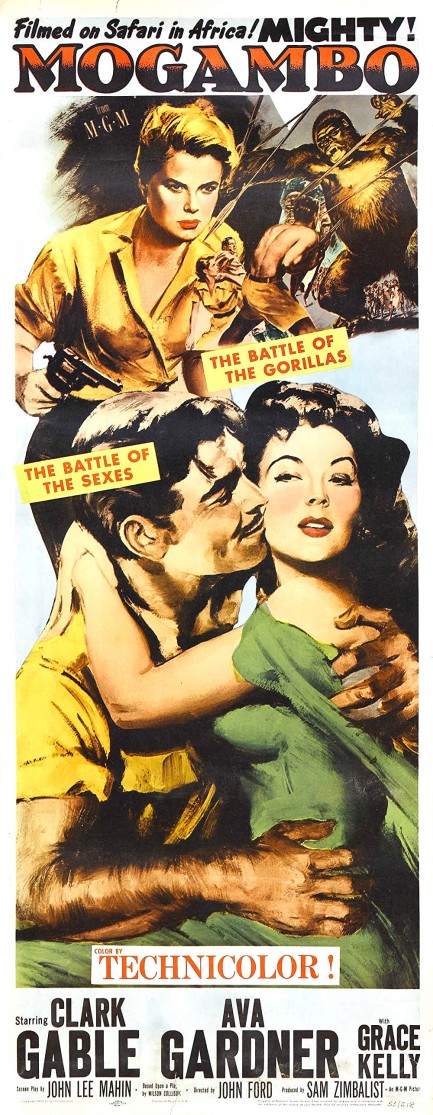
As famous as Mogambo is, we'd never seen it, had never read a review of it, and had no idea going in what it was about except that it was a safari movie and a remake of the 1932 adventure Red Dust, which we'd also never seen. There are few hit movies—especially with stars the stature of Clark Gable, Ava Gardner, and Grace Kelly—that we don't know at least a little something about. So we cleared the slate, cooked up some popcorn in our special Lindy's hand-cranked popper, and settled in for a screening.
Shot in Kenya, Uganda, French Equatorial Africa (now Central African Republic), and the Tanganyika region of what is now Democratic Republic of Congo, the movie is about a hard-edged safari guide and hunter played by Gable (also the star of Red Dust, by the way) who tries to score with both Gardner and Kelly, and soon has them at each other's throats. These old movies often work on the presumption that the male star is irresistible—period. As a result, screenwriters were sometimes lazy. They'd fail to write the male lead with any charm at all.
That holds true here, as Gable is gruff, rude, twenty years older than Gardner, and almost thirty years older than Kelly. We're fine about the age difference, unlike the “age appropriate” crowd that thinks women are capable of making any decision except ones about whom they love, but because Grant is a complete sourdough some charm would have made Gardner's and Kelly's attraction to him more understandable. Handsome though he may be, here he's nothing more than moustache, hair tonic, and bossiness. But okay, Gardner and Kelly are both in states of need, and Gable is more than happy to introduce them to his bush snake, so what you get is a love triangle folded inside a Technicolor safari adventure. Fine.
The production is spiced up with majestic scenery, nice costumes, realistic animal footage, an overwhelming feel of the exotic, the tantalizing implication of intimacy with two of the most beautiful women in cinema, and a deft, assured performance from Gardner. In fact, while Gable is top billed, Ava gets nearly all the good lines. “Listen, buster,” she scolds Clark, “you and your quick-change acts aren't gonna hang orange blossoms all over me just because you feel the cold weather coming on!” That's a scathing way to call someone old and desperate. But Gable has his moments too. We liked when he blustered, “You know how it is on safari. It's in all the books. The woman always falls for the white hunter and we guys make the most of it.” That's meta, so we hear.
Obviously, tribespeople figure prominently, and you can discern marginal improvement in their portrayal since the days of Weissmuller's Tarzan. They're still just ornamentation in their own lands, but at least none lay down their lives to save a white man who's spent most of his screen time cracking a whip at them. Whew. Overall, we thought Mogambo was decent. Not great, mind you—because Gable deserved to play a more nuanced character and did not have that chance—but it was decent. It premiered today in 1953.

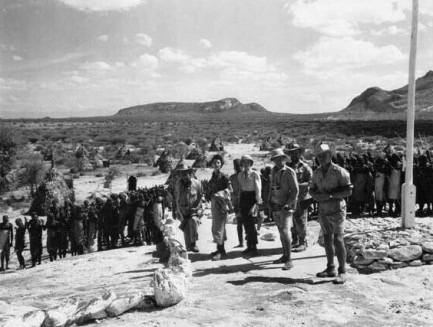


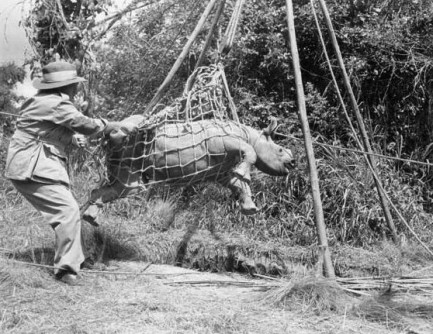
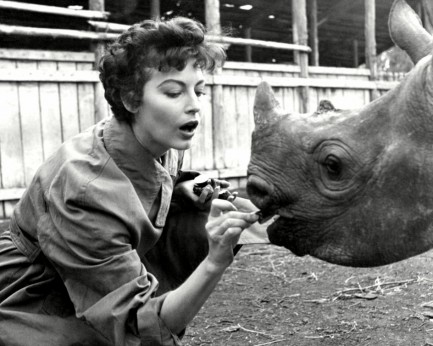
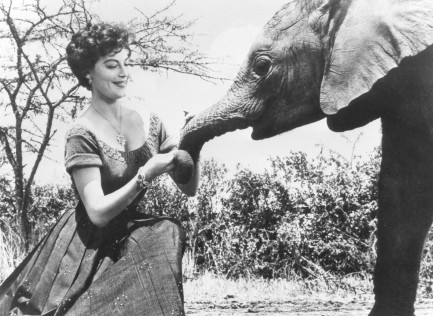
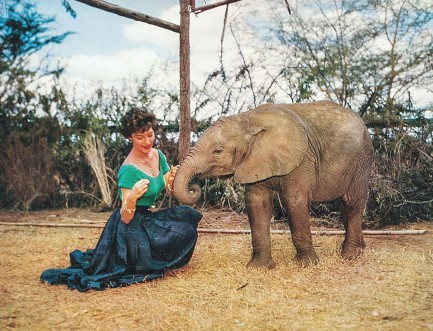
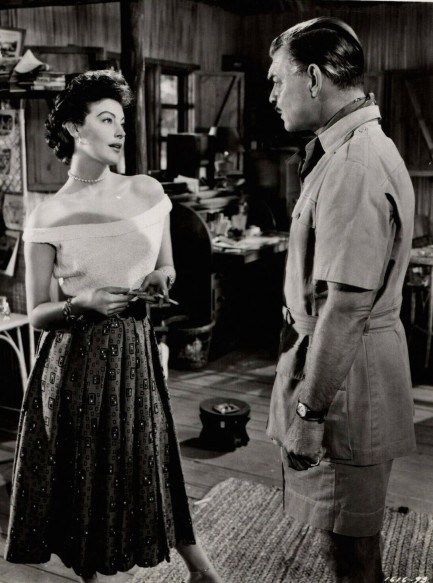
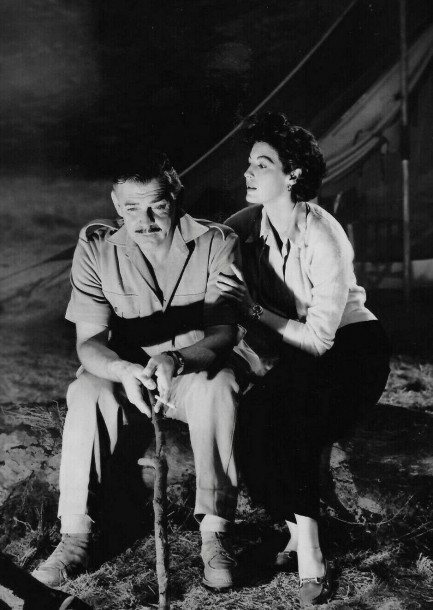
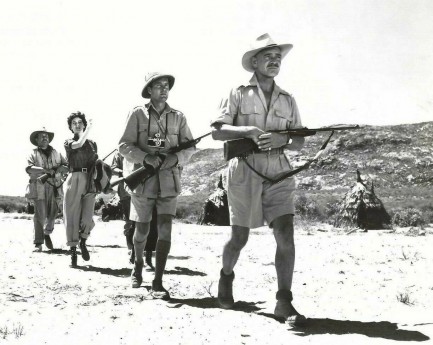

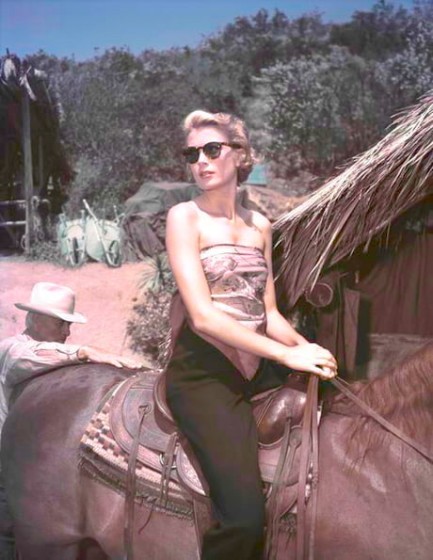
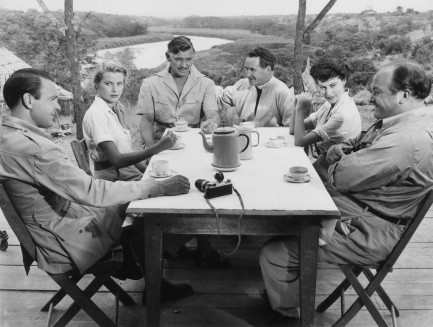
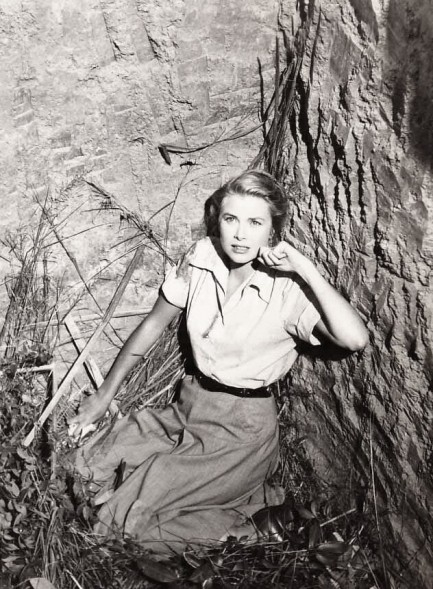
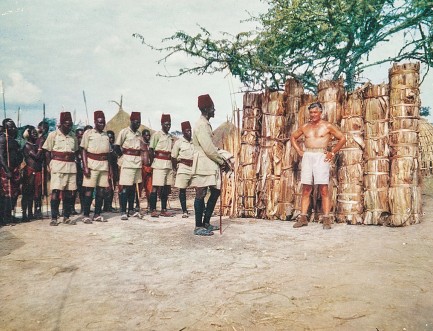


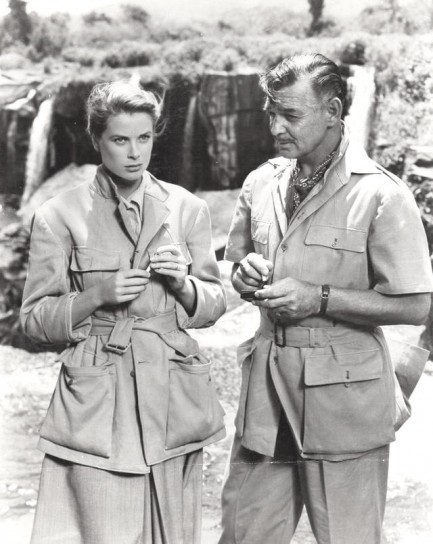

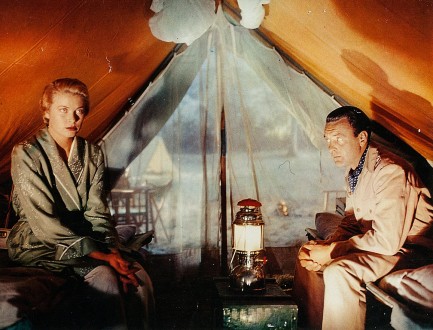
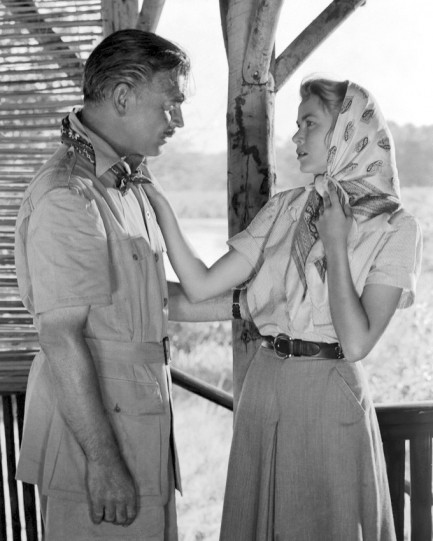
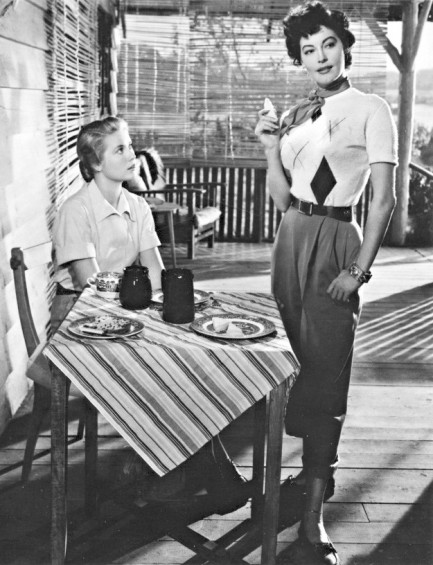
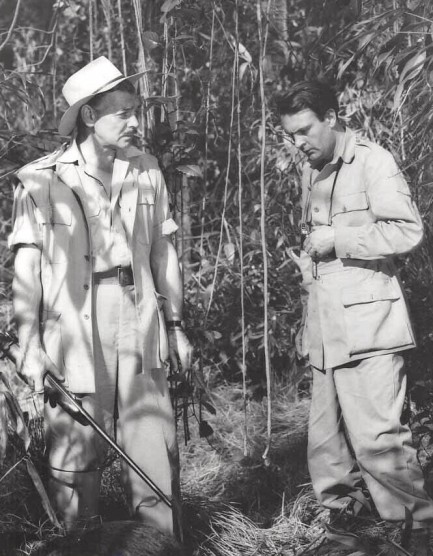
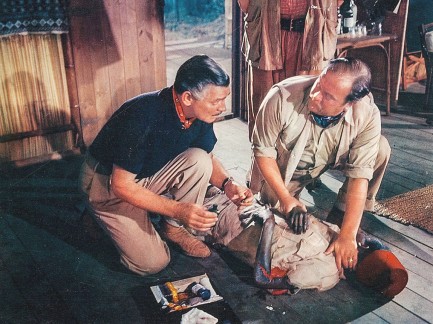
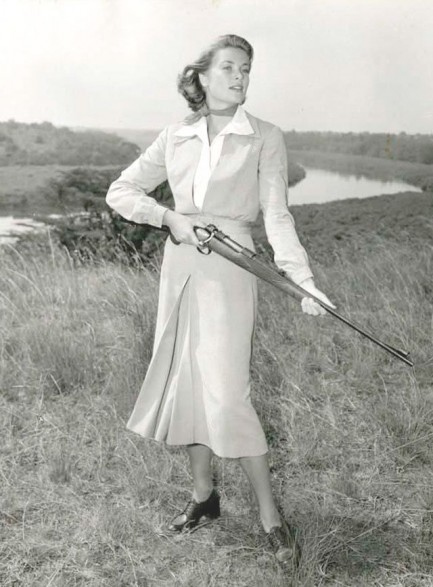
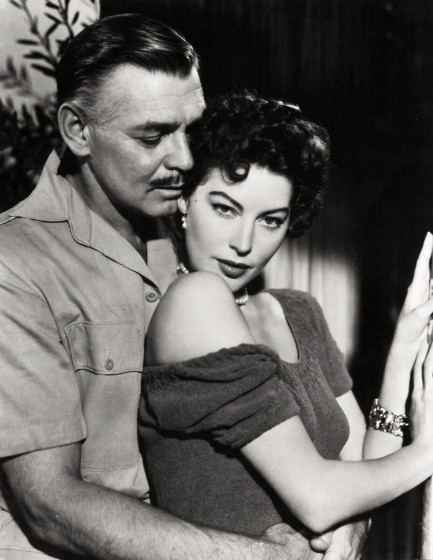


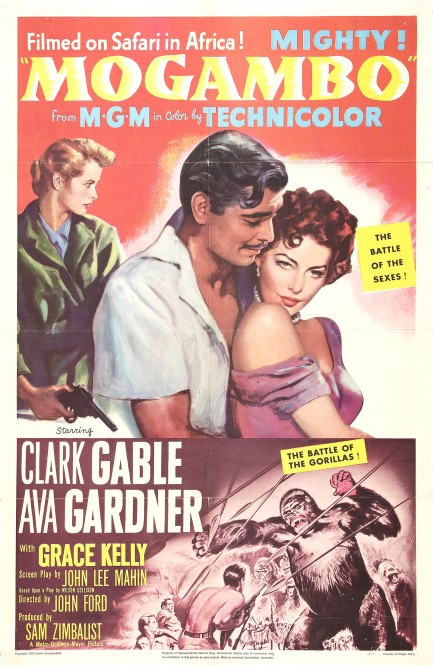






























| Femmes Fatales | Feb 20 2022 |

Live, survive, thrive—she covered the entire spectrum.

Above is a lovely image of a person we guarantee you'll find very interesting. Her name is often given as Elizabeth Bagaaya, or Elizabeth Bagaya, but she's also known as Princess Elizabeth of Toro, and she's a Ugandan lawyer, diplomat, politician, and model—not in that order. Let's see if we can get her incredibly wild life story straight. First of all, Bagaaya was a princess because her mother was married to the King of Toro, an ancient kingdom that spanned not only Uganda, but parts of present-day Burundi, Rwanda, Tanzania, and Zaire. Next she was a brilliant student, the first black woman to win admission to the English Bar Association, and, in 1965, Uganda's first female lawyer. In 1967 the Ugandan government under Milton Obote abolished the monarchy and Bagaaya lost her title and became merely a person from a powerful family.
 In 1971 Idi Amin overthrew Obote and installed himself as dictator. Taking notice of Bagaaya, who in addition to her legal background had been modeling for a few years, he appointed her Minister of Foreign Affairs. He had an ulterior motive. He wanted her to become one of his wives. Her answer—a hard no.
In 1971 Idi Amin overthrew Obote and installed himself as dictator. Taking notice of Bagaaya, who in addition to her legal background had been modeling for a few years, he appointed her Minister of Foreign Affairs. He had an ulterior motive. He wanted her to become one of his wives. Her answer—a hard no.Amin was displeased by her reticence, and placed her under house arrest. He allegedly had her hair forcibly shaved, and generally made her existence hell, all of which prompted her to escape to Nigeria.
Just as an aside—Amin killed up to 300,000 people, maybe even more, but to get a sense of how dangerous he was in his personal life, consider the fact that his second wife, Kay, died under unknown circumstances and her body turned up dismembered, and his fifth wife, Sarah, had a previous boyfriend who vanished and is thought to have been beheaded. Amin wanted Bagaaya, but she was in no way safe because of that.
Anyway, moving on, some of Bagaaya's doings overlap, but the bulk of her modeling came after fleeing from Amin, and when she undertook that profession she gave it her all, becoming the first black woman to have a spread in Vogue, and the first to appear on the cover of Harper's Bazaar. As it was a chic thing for models to do at the time, she posed nude, with the results you see. She also acted, appearing in the films Things Fall Apart and Sheena—yeah, the one with Tanya Roberts.
In 1979 she returned to Uganda because Amin was gone, and the country was having elections. She helped former president Obote win, later served as Uganda's ambassador to Germany and the Vatican, and was Uganda's High Commissioner to Nigeria. There's more, but why go on? What we've described, ladies and gentlemen, is called a life, one that is ongoing, as Princess Elizabeth remains an important figure, aunt of the current King of Toro, and an outsize and complex personality.
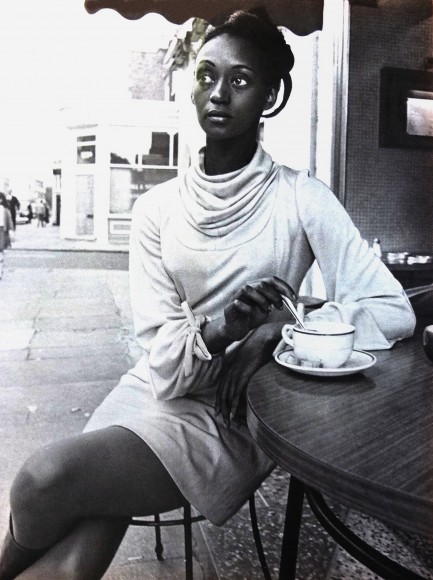
| Mondo Bizarro | Jan 19 2017 |

Section of CIA trove of declassified material reveals research into psychic phenomena.
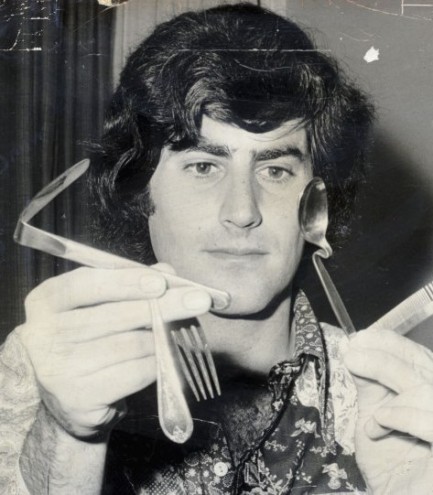
The Central Intelligence Agency has just published 800,000 formerly classified files online. The data dump, comprising some 13 million separate documents, isn't technically new. The files had been declassified years ago, but had only been available at the National Archives in Maryland, on only four computers tucked away at the back of the building which were accessible only during business hours. A freedom-of-information group called MuckRock sued the CIA and forced it to upload the collection, and the process took more than two years. Among the discoveries in the trove are documents related to the Stargate Project, which was tasked with examining psychic phenomena. A subset of those investigations involved celebrity paranormalist Uri Geller in 1973.
For those who don't know, Geller is a guy who used to show up on television programs like The Tonight Show and perform various paranormal tricks. His fame drew the roving gaze of the CIA, and they had him come in for a series of tests. No word on whether he had a choice in the matter. The testers ultimately reached the conclusion that Geller was legit, stating in the declassified dox that he had, “demonstrated his paranormal perceptual ability in a convincing and unambiguous manner.” How did they reach that conclusion? Through double blind experiments, one of which involved sealing Geller in a room, having a worker make a drawing, and asking Geller to recreate the drawing without having seen it. The images above and below show three of the original drawings, and Geller's eerily accurate renderings.
Through double blind experiments, one of which involved sealing Geller in a room, having a worker make a drawing, and asking Geller to recreate the drawing without having seen it. The images above and below show three of the original drawings, and Geller's eerily accurate renderings.
 Through double blind experiments, one of which involved sealing Geller in a room, having a worker make a drawing, and asking Geller to recreate the drawing without having seen it. The images above and below show three of the original drawings, and Geller's eerily accurate renderings.
Through double blind experiments, one of which involved sealing Geller in a room, having a worker make a drawing, and asking Geller to recreate the drawing without having seen it. The images above and below show three of the original drawings, and Geller's eerily accurate renderings.Geller made a nice career for himself finding hidden objects, bending spoons, and reproducing hidden sketches, but the really interesting part is he may have been a spy. In 2013, a BBC documentary titled The Secret Life of Uri Geller–Psychic Spy? claimed Geller worked for the CIA, was recruited by Mossad, and performed such missions as using only the power of his mind to erase floppy discs carried by KGB agents. Geller allegedly spent years in Mexico working as security for President José López Portillo, and the aforementioned documentary suggests he was also involved in some capacity in the famed Israeli hostage rescue in Entebbe, Uganda in 1976. It may take a few more CIA declassifications before we get to the bottom of all that.
Geller is still around at age seventy (looking about fifty, which might the most convincing evidence yet of his paranormal ability) and he still appears in news reports for antics such as purchasing Lamb Island, off the eastern coast of Scotland, which was the site of many witch trials, and for building a 12 foot-tall statue of a gorilla made from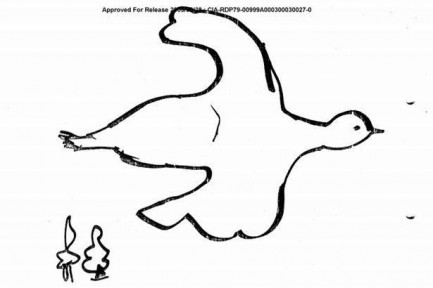
 40,000 metal spoons. We aren't believers in psychic ability or any form of the paranormal. And we won't be unless we see evidence proving these realms exist. But the CIA said Geller was the real deal, so that's worth something. Of course, they also said Iraq had a nuclear weapons program, so maybe their opinion should be taken with a grain of salt.
40,000 metal spoons. We aren't believers in psychic ability or any form of the paranormal. And we won't be unless we see evidence proving these realms exist. But the CIA said Geller was the real deal, so that's worth something. Of course, they also said Iraq had a nuclear weapons program, so maybe their opinion should be taken with a grain of salt.

 40,000 metal spoons. We aren't believers in psychic ability or any form of the paranormal. And we won't be unless we see evidence proving these realms exist. But the CIA said Geller was the real deal, so that's worth something. Of course, they also said Iraq had a nuclear weapons program, so maybe their opinion should be taken with a grain of salt.
40,000 metal spoons. We aren't believers in psychic ability or any form of the paranormal. And we won't be unless we see evidence proving these realms exist. But the CIA said Geller was the real deal, so that's worth something. Of course, they also said Iraq had a nuclear weapons program, so maybe their opinion should be taken with a grain of salt.



































































